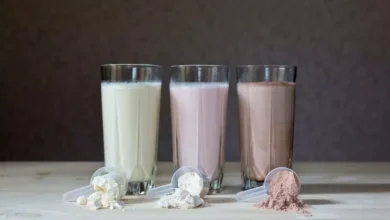How to Build a Balanced and Healthy Plate for Everyday Meals
Creating a healthy and balanced plate isn’t about strict dieting or eating bland food—it’s about nourishing your body in a sustainable, enjoyable way. A well-constructed plate provides the right mix of nutrients, supports energy levels, and can help prevent chronic diseases. In this guide, we’ll break down how to build a nutritious plate for everyday meals using simple steps that anyone can follow.
The Core Principle: The Healthy Plate Model
One of the most effective visual tools for balanced eating is the Healthy Plate Model, inspired by recommendations from Harvard and other nutritional institutions. It divides your plate into four major components:
- ½ plate of vegetables and fruits
- ¼ plate of whole grains or complex carbohydrates
- ¼ plate of healthy protein
- A serving of healthy fat and hydration on the side
Let’s take a closer look at each section and how to apply it in real life.
1. Fill Half of Your Plate with Vegetables and Fruits
Vegetables and fruits are rich in essential vitamins, minerals, fiber, and antioxidants. They help strengthen your immune system, support digestion, and reduce the risk of disease.
Tips for this section:
- Aim for variety and color—different colors mean different nutrients.
- Prioritize fresh or minimally processed options.
- Leafy greens (like spinach and kale), cruciferous vegetables (like broccoli and cauliflower), and bright fruits (like berries, oranges, and mangoes) are excellent choices.
Examples:
- A fresh salad with tomatoes, cucumbers, carrots, and olive oil
- Steamed broccoli and roasted sweet potatoes
- A fruit salad with berries, kiwi, and orange slices
2. Reserve a Quarter for Whole Grains or Complex Carbs
Whole grains and complex carbohydrates are the body’s main source of energy. Unlike refined carbs, they digest slowly, helping maintain stable blood sugar levels and keeping you full for longer.
Top picks:
- Brown rice, quinoa, whole wheat pasta
- Sweet potatoes, oats, barley
- Legumes like lentils and black beans (which also add some protein!)
Avoid or minimize:
- White bread, white rice, sugary cereals, and highly processed baked goods
3. Add a Quarter of Lean and Plant-Based Proteins
Protein is vital for muscle repair, immune function, and cell health. Including high-quality protein in your meals ensures you feel satisfied and nourished.
Great sources of protein:
- Chicken breast, turkey, eggs
- Tofu, tempeh, lentils, chickpeas
- Fish like salmon or sardines (also packed with omega-3s)
- Low-fat Greek yogurt or cottage cheese
Portion size tip: Aim for a palm-sized portion for most proteins.
4. Don’t Forget Healthy Fats
Fats are often misunderstood, but your body needs them for hormone production, brain function, and nutrient absorption. The key is choosing unsaturated fats and limiting trans and saturated fats.
Good fat sources:
- Avocados
- Nuts and seeds
- Olive oil, flaxseed oil
- Fatty fish (like mackerel and salmon)
How to include:
- Add avocado slices to salads
- Drizzle olive oil over roasted vegetables
- Sprinkle chia or sunflower seeds over yogurt
5. Hydrate Wisely
Water is essential for every cell in your body. Hydration affects everything from energy levels to digestion. Sugary drinks, on the other hand, add unnecessary calories and can spike blood sugar.
Healthy hydration choices:
- Water (plain or infused with fruits/herbs)
- Unsweetened herbal teas
- Coconut water (in moderation)
- Limit sugary sodas, energy drinks, and excess caffeine
6. Portion Control and Mindful Eating
Even healthy meals can become unbalanced if portion sizes are too large. Mindful eating helps prevent overeating and increases satisfaction.
How to practice:
- Eat slowly and without distractions
- Listen to your hunger and fullness cues
- Use smaller plates to encourage appropriate portion sizes
7. Customize Based on Your Needs
Not all healthy plates look the same for everyone. Adjust the balance based on your:
- Activity level (athletes may need more protein and carbs)
- Health goals (e.g., weight loss, muscle gain, energy boost)
- Dietary restrictions (gluten-free, dairy-free, vegetarian, etc.)
Sample Balanced Plate Ideas
Here are a few complete meal combinations to inspire you:
🌮 Mediterranean Bowl
- Grilled chicken breast
- Quinoa
- Cucumber, cherry tomatoes, olives, and spinach
- Olive oil and lemon dressing
- A glass of water with mint
🍛 Vegetarian Stir-Fry
- Tofu or tempeh
- Brown rice
- Broccoli, bell peppers, carrots
- Sesame oil and soy sauce
- Herbal green tea
🥗 Power Salad
- Mixed greens with roasted chickpeas
- Sweet potatoes and avocado
- Seeds (pumpkin or sunflower)
- Balsamic vinaigrette
- Sparkling water with lemon
Long-Term Benefits of a Balanced Plate
When you consistently build balanced plates, you may experience:
- Better digestion and regularity
- Stable energy throughout the day
- Fewer cravings and emotional eating
- Improved mental clarity
- Enhanced immune system and skin health
- Reduced risk of chronic diseases like diabetes and heart disease
Final Thought – Eat for Nourishment, Not Perfection
The goal isn’t to eat perfectly all the time but to make conscious, nourishing choices most of the time. A balanced plate is a practical, achievable way to improve your health—without counting calories or following restrictive diets.
Build your meals with variety, color, and care, and you’ll be amazed at how much better you feel every day. 🍽️🌿

Hello! My name is Alan Teixeira and I am passionate about helping people live healthier, more balanced lives. From mindful eating to daily habits that promote physical and mental well-being, I believe that small, consistent changes can lead to powerful transformations.
I created this blog to share practical tips, reliable information, and thoughtful insights that can inspire you to take better care of yourself—with balance, mindfulness, and positivity.
If you are looking to improve your health, nourish your body, and build a lighter, more fulfilling routine, you are in the right place. Welcome!





